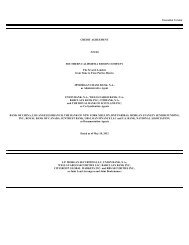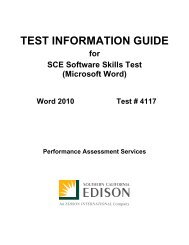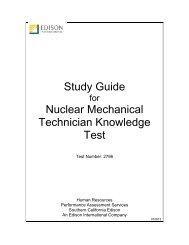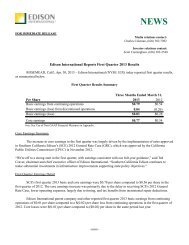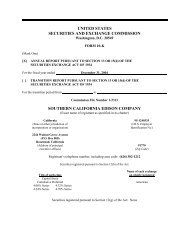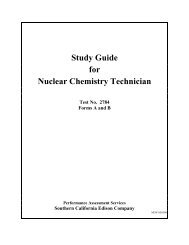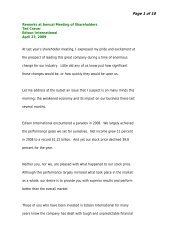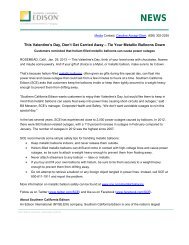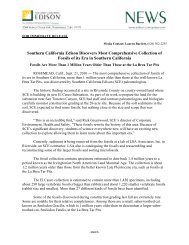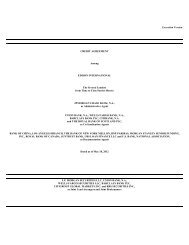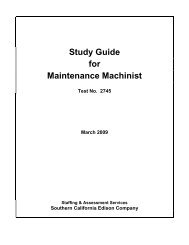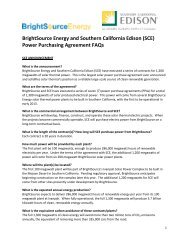10-Q - Edison International
10-Q - Edison International
10-Q - Edison International
Create successful ePaper yourself
Turn your PDF publications into a flip-book with our unique Google optimized e-Paper software.
Credit RiskCredit risk exposure from counterparties for power and gas trading activities is measured as the sum of net accountsreceivable (accounts receivable less accounts payable) and the current fair value of net derivative assets (derivative assets lessderivative liabilities) reflected on the consolidated balance sheets. SCE enters into master agreements which typically providefor a right of setoff. Accordingly, SCE's credit risk exposure from counterparties is based on a net exposure under thesearrangements. SCE manages the credit risk on the portfolio for both rated and non-rated counterparties based on credit ratingsusing published ratings of counterparties and other publicly disclosed information, such as financial statements, regulatoryfilings, and press releases, to guide it in the process of setting credit levels, risk limits and contractual arrangements,including master netting agreements. As of March 31, 2012, the amount of balance sheet exposure as described above brokendown by the credit ratings of SCE's counterparties, was as follows:March 31, 2012(in millions) Exposure 2 Collateral Net ExposureS&P Credit Rating 1A or higher $ <strong>10</strong>1 $ — $ <strong>10</strong>1A- 1 — 1Not rated 3 14 (4) <strong>10</strong>Total $ 116 $ (4) $ 112123SCE assigns a credit rating based on the lower of a counterparty's S&P or Moody's rating. For ease ofreference, the above table uses the S&P classifications to summarize risk, but reflects the lower of the twocredit ratings.Exposure excludes amounts related to contracts classified as normal purchases and sales and non-derivativecontractual commitments that are not recorded on the consolidated balance sheets, except for any related netaccounts receivable.The exposure in this category relates to long-term power purchase agreements. SCE's exposure is mitigatedby regulatory treatment.CRITICAL ACCOUNTING ESTIMATES AND POLICIESFor a discussion of SCE's critical accounting estimates and policies, see "Critical Accounting Estimates and Policies" in theyear ended 2011 MD&A.NEW ACCOUNTING GUIDANCENew accounting guidance is discussed in "SCE Notes to Consolidated Financial Statements—Note 1. Summary ofSignificant Accounting Policies—New Accounting Guidance."ITEM 3.QUANTITATIVE AND QUALITATIVE DISCLOSURES ABOUT MARKET RISKInformation responding to this item is included in the MD&A under the heading "Market Risk Exposures" and isincorporated herein by reference.ITEM 4.CONTROLS AND PROCEDURESDisclosure Controls and ProceduresSCE's management, under the supervision and with the participation of the company's President and Chief Financial Officer,has evaluated the effectiveness of SCE's disclosure controls and procedures (as that term is defined in Rules 13a-15(e) or15d-15(e) under the Securities Exchange Act of 1934, as amended (the "Exchange Act")) as of the end of the period coveredby this report. Based on that evaluation, the President and Chief Financial Officer concluded that, as of the end of the period,SCE's disclosure and procedures were effective.Change in Internal Control Over Financial ReportingThere were no changes in SCE's internal control over financial reporting during the period to which this report relates thathave materially affected, or are reasonably likely to materially affect, SCE's internal control over financial reporting.32



